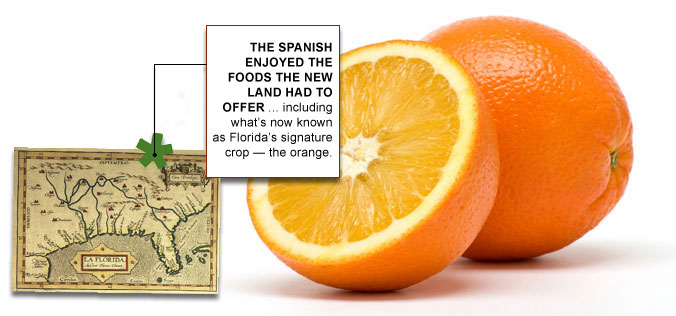In 2013, Florida will celebrate 500 years since it was discovered by Juan Ponce de Leon. He named this land “La Florida” because it was the season known in Spain as “Pascua Florida,” the Festival of Flowers, and because much of the land’s vegetation was in bloom. Later, in 1539, another European settler, Luis Hernandez de Biedma, called Florida a land of plentiful food.
In the decades that followed the discovery of Florida, the Spanish enjoyed the foods the new land had to offer such as corn, beans and seafood, and introduced continental crops, including what’s now known as Florida’s signature crop — the orange. They also introduced cattle, horses, and swine to the new world.
Though the agricultural production of those early settlers was just enough to feed themselves, it marked the beginning of a booming industry that would grow to encompass wooden shipbuilding, turpentine, open-range cattle, and the winter salad bowl of the nation.
Florida’s history is often measured by nature’s events rather than man’s. Hurricanes, freezes, floods, and fires are ever-present companions in our state, but food, fiber, and nursery production have endured.
Today, Florida’s agriculture industry produces nearly 300 commodities, has a $100 billion impact on the state’s economy and employs nearly one million people. What we produce is served in homes and restaurants across the nation, as well as in 120 other countries throughout the world.
While some of today’s Fresh From Florida products are native and others were introduced by early settlers, all of them have been a vital part of our 500-year history.
CREDIT
column by COMMISSIONER ADAM H. PUTNAM

